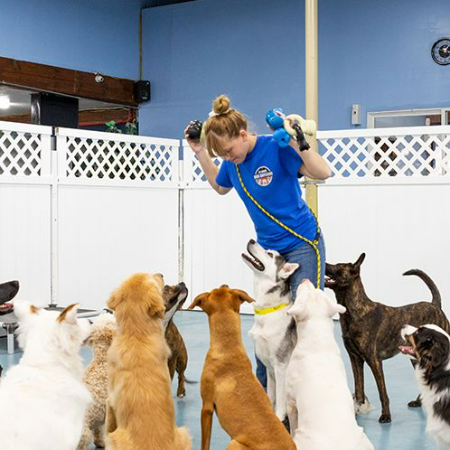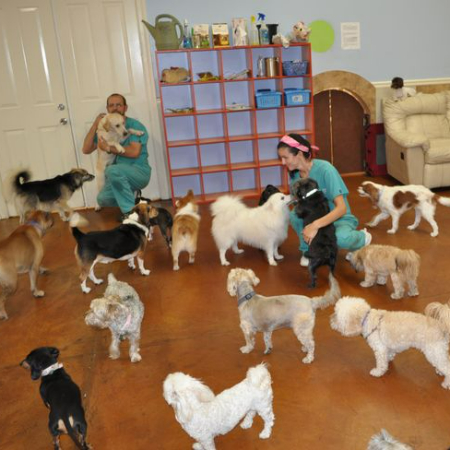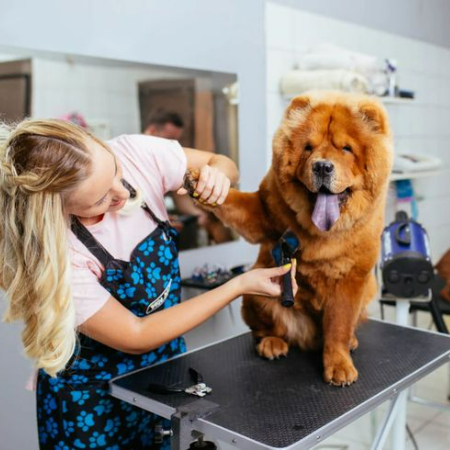When it comes to providing their furry friends with a secure, social, and engaging environment while their owners are at work or running errands, dog daycare can be a great alternative. To guarantee your dog’s safety and enjoyment, though, you need to do more than simply drop them off at the closest facility.
Not all dog daycare experiences are made equal. To ensure your dog has the greatest daycare experience possible, we’ve put up a list of important dos and don’ts to help you navigate the world of dog daycare.
Do: Research Daycare Facilities Thoroughly


Every childcare facility is unique. Did your homework on possible facilities? This is the first step to making sure your dog has a safe and enjoyable stay. Find a childcare facility that
Possesses Positive Reviews: Read internet reviews and consult other dog owners for advice. You may get a true feel of what to expect from personal experiences.
Is Insured and Licenced: To function, a respectable daycare must possess the required insurance and licenses. They are guaranteed to adhere to particular care standards and be ready for any eventuality.
Tours the Premises: You are welcome to take a tour of any facility that is worth your time. You can now observe where your dog will eat, sleep, and play. Verify that everything is safe, tidy, and orderly.
Don’t: Choose Based on Price Alone
Paying a little extra for high-quality care is worth it when you’re entrusting someone with your dog’s safety and happiness, even though budget is an important factor.
Selecting the cheapest daycare may not be the best choice for your dog’s well-being. Lower prices can sometimes mean fewer staff members, less training, or subpar facilities.
Do: Check Staff-to-Dog Ratios
Dogs-to-worker ratios in a good dog daycare will be minimal. Every dog will be given the proper care and supervision thanks to this. Though certain facilities may provide even greater ratios, one staff member for every 10 to 15 canines is a generally accepted guideline. Mishaps, altercations, and tension are less likely in a play area under close supervision.
Don’t: Ignore Your Dog’s Personality and Needs
Not all dogs are appropriate for daycare settings, and each dog is different. A dog’s energy level, temperament, and socialization abilities should all be taken into account before enrolling them.


Dogs That Are Shy or Nervous: Your dog may not like daycare if they are shy or nervous around other dogs. In a group setting, they could feel overburdened or anxious.
High-Energy Dogs: Conversely, if your dog is hyperactive and enjoys playing, a daycare with lots of open areas for running around will be perfect for them.
Special needs: Certain pets can need more attention due to medical issues or specific demands. Ascertain if the daycare is prepared and eager to meet these requirements.
Do: Provide Clear Instructions and Information
It’s crucial to provide your dog’s daycare provider with specific instructions and any pertinent details regarding their behavior, health, and preferences. This makes it easier for the staff to meet the unique needs of your dog and guarantees a more seamless experience for everyone.
Feeding schedule and diet: Please inform the daycare personnel if your dog follows a particular feeding schedule or diet.
Medical Conditions: Verify that the personnel is informed of any ailments or prescription drugs your dog needs.
Behavioral Quirks: Please let the staff know if your dog has any specific preferences or odd habits. By knowing this, you can guarantee your dog’s comfort and avoid misunderstandings.
Don’t: Forget to Bring the Necessary Supplies
Bring your dog’s favorite toys, bed, or blanket to help them feel more at home, even though most daycares will supply the necessary. In the daycare, familiar objects help ease anxiety and provide a cozier atmosphere.


Sufficient food and treats should be packed for the day, particularly if your dog has dietary needs.
Drugs: Make sure any medication your dog takes is appropriately labeled and comes with instructions if necessary.
Toys & Comfort Items: Bringing a cozy blanket or cherished toy from home might help ease anxiety and make going to daycare less scary.
Do: Observe Drop-Off and Pick-Up Times
Respecting the daycare’s schedule and the schedules of other customers by being on time for drop-off and pick-up demonstrates consideration for the daycare’s needs and the well-being of the dogs. Additionally, enquire about the daycare’s policies regarding late pick-ups, as some may impose extra fees.
Don’t: Overlook Safety Protocols
Any childcare facility must prioritize safety. To safeguard every dog, a respectable establishment would implement stringent safety measures.
Vaccination Requirements: Make sure your dog is up to date on all of his or her vaccines, and confirm that the daycare has the same requirements in place for all dogs.
Procedures for Emergencies: Find out how the hospital handles illnesses or injuries in an emergency.
Secure Environment: Having multiple gates, safe fencing, and distinct spaces for dogs of varying sizes and sorts are essential components of a secure daycare.
Do: Monitor Your Dog’s Behavior After Daycare
Keep an eye on your dog’s behavior after their initial days of daycare. Are they content despite their fatigue? Are they appearing tense or uneasy? Even though a little weariness is acceptable (they’ve been playing all day!), persistent signs of stress may be a warning that they shouldn’t be in a daycare.
Don’t: Hesitate to Ask Questions or Voice Concerns


Never be afraid to voice your concerns if you have any regarding the daycare’s policies or your dog’s time there. A happy and safe daycare for your dog depends on open communication between you and the staff.
Ask About the Day’s Activities: Find out what your dog played with, how they behaved, and what activities they engaged in over the day by asking about it.
Voice concerns: Talk to the staff right away if your dog’s behavior changes or if something doesn’t feel right.
Do: Continue Training and Socialization at Home
Doggy daycare can be a great supplement to your dog’s training and socialization, but it shouldn’t replace the work you do at home. Continue to train and socialize your dog outside of daycare to reinforce good behavior and build their confidence.
Conclusion
Making the decision to send your dog to daycare is a big one that needs careful thought. Your dog will have a safe, contented, and rewarding experience if you abide by these dos and don’ts.
To suit your dog’s needs and provide a loving, enjoyable atmosphere, a good daycare will collaborate with you. Since you’re not around, your dog deserves the greatest care!
Doglime for more dog-related information.

